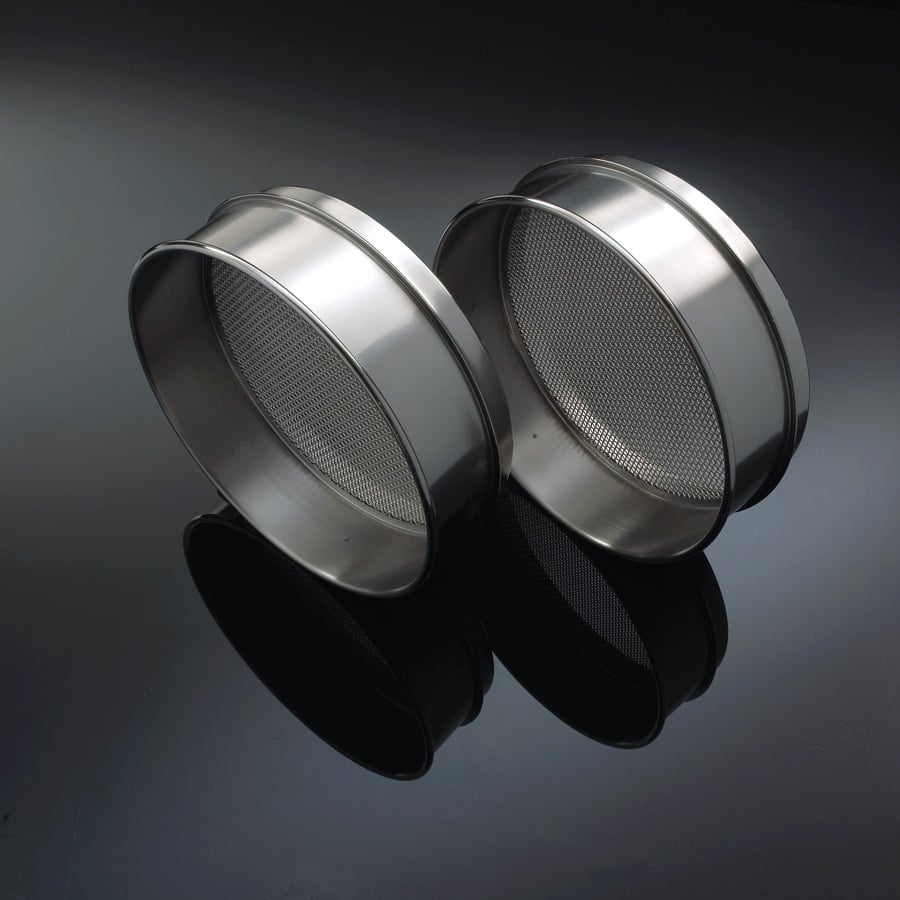Sieves for Master Stacks and Special Tight Tolerance Applications
A mid-point sieve has had the mesh inspected after mounting. The sieve is then selected as a mid-point if the results give tolerances that are in the middle of the ASTM standard.
For example with a No. 40 sieve (425µ), key differences between ASTM standard and a Mid-Point sieve are:
The effect of these tightened tolerances is an improvement in variation of approximately 30%. These results are traceable to a NIST standard.
Mid-point sieves are available with following options:
When a process requires a high level of repeatability, mid-points can be used on all sieve tests. However, the predominant application for mid-point sieves is as master stack. A master stack is used to check and re-calibrate sieves used in everyday testing.
The need for woven wire mesh tolerances, tighter than the certified specifications of ASTM E11can be satisfied by mid-point sieves. The latest specification applies statistical analysis to the measurements an has established three levels of Sieve Certification (Compliance, Inspection, and Calibration).
The measurement specifications result in increasing levels of assurance that the sieves meet the tolerances define in ASTM E11. However, the specifications do not alter the maximum allowable variances in the openings.
The midpoint sieve tightens these tolerances by 30%. This reduces the variation in hole sizes. The impact of these changes is more evident as the mesh size decreases.
This article from Powder and Bulk Solids Magazine discusses the impact go acceptable tolerance vs mesh size.
In addition to the tightening of the wire mesh sieve certification standards by ASTM, there is a growing trend for the use of calibration techniques. These calibration techniques provide a check on the actual performance characteristics of a sieve and not a static measurement of a small sample of openings.
There are calibration techniques that are traceable to NIST or other national measurement bodies. Using methods such as calibration beads, makes it practical to only use Compliance Sieves throughout an operation. These calibrations can be used in standard quality management systems such as ISO 9000.

IIt is our desire to help you with your sieving analysis. Let us know about you questions, your areas of interest or your particle size testing problems.
We will do our best to to give you answers, share our experience and help sort out answers to you sieving issues. Let us know by email (Sieves@cscscientific.com), phone (703-876-4030) or text (703-608-1349)
© 2023 CSC Scientific Company, Inc. All rights reserved.